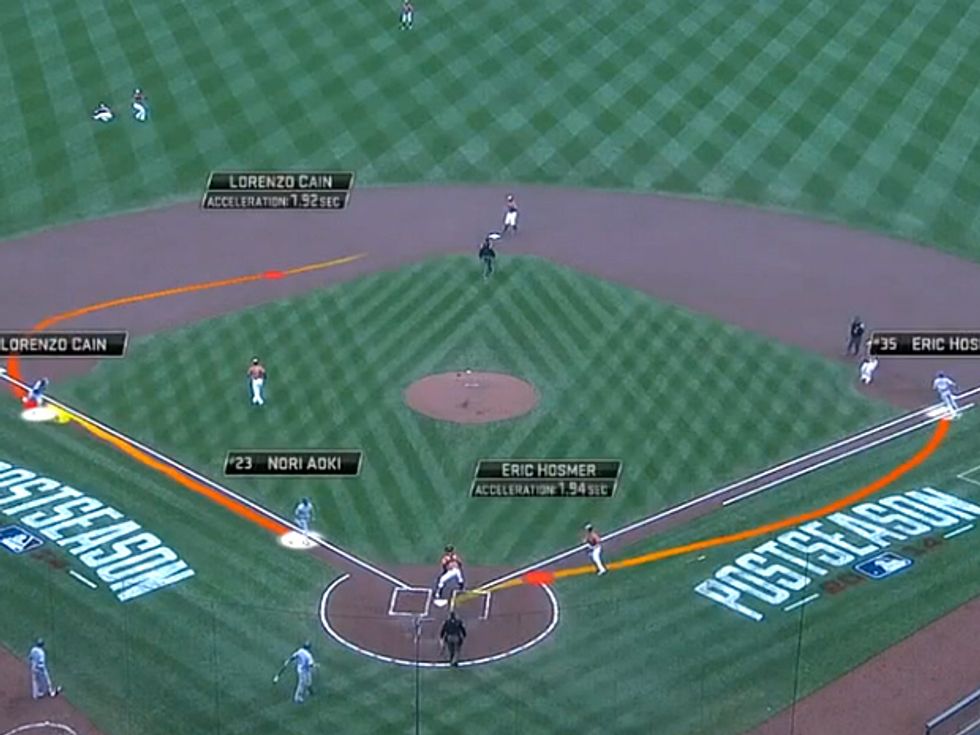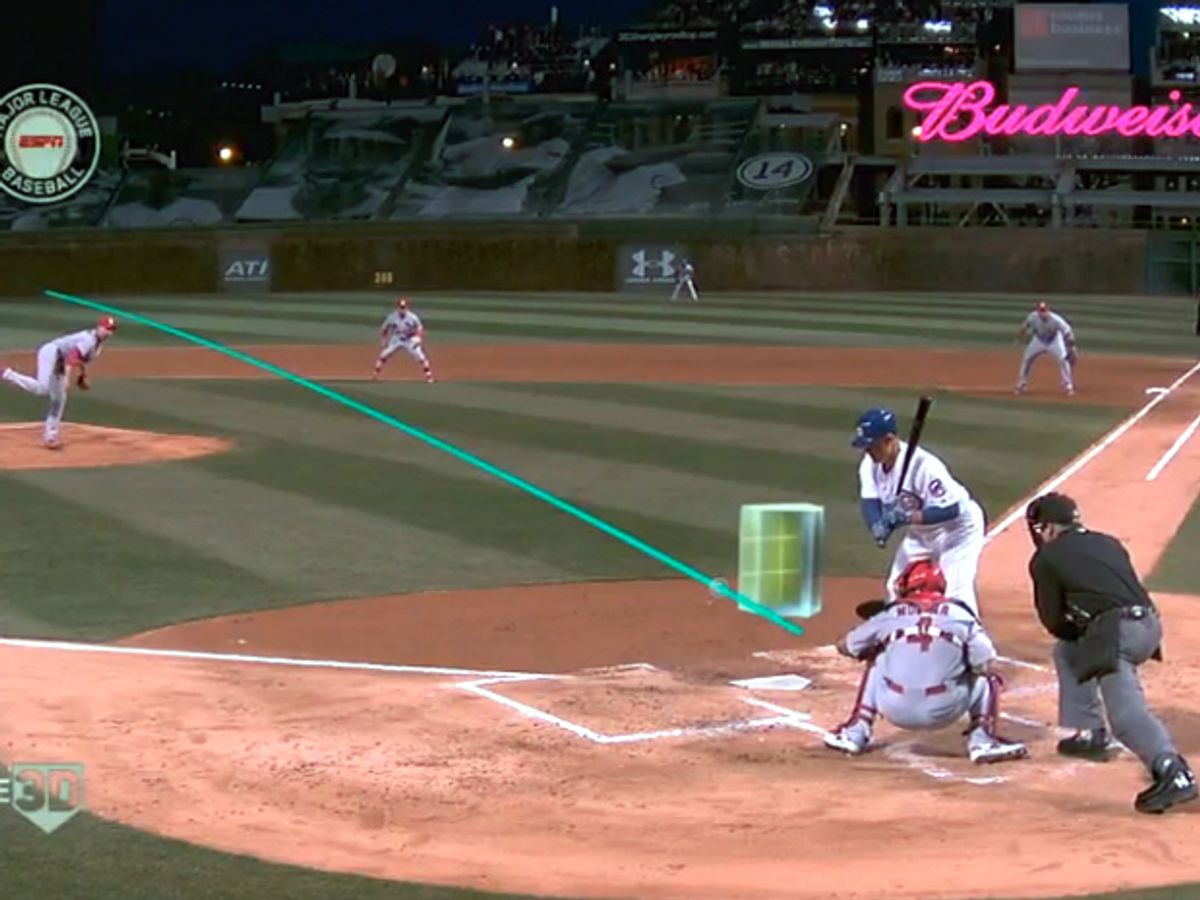If you’ve always thought the problem with baseball was that it didn’t have enough statistics, then here’s some good news: Major League Baseball has installed arrays of HD-video cameras and 3-D Doppler radar devices in every park in the league to track not only the ball, but also the movements of every player on the field. In Tuesday night’s relatively meaningless early-season game between the St. Louis Cardinals and Washington Nationals, Major League Baseball’s new Statcast system made its TV debut.
Baseball has a long standing love affair with statistics—before more esoteric sabermetrics like WAR were developed (that would be “wins above replacement” for the uninitiated), avid fans tracked their favorite players’ batting averages, RBIs, and ERAs. But certain aspects of the game like defense, positioning, and baserunning, seemed resistant to quantification.
To measure the previously unmeasureable, data from TrackMan radar units are combined with stereoscopic images from two camera arrays, spaced 15 m apart. The radar measurements are useful for keeping track of the ball dynamics (including its spin), while video is useful for tracking player movements. Unlike the SportVU player tracking system used in the NBA, which has a top-down view on the action, Statcast’s camera location requires it to intelligently resolve player occlusions.
So far, some of the most notable measurements are players’ top speeds, reaction times, and path efficiency (how directly they ran to the next base or to intercept the path of a fly ball). In a television broadcast, Statcast data can be used to augment replays, after about 12 seconds of processing time.
What seems to be missing, though, is a sense of context. Viewers are left wondering whether a 0.1 m.p.h. difference in top speed on the basepaths is really significant. Until fans gain an intuitive sense of what median and exceptional values are for each new metric, the raw numbers don’t really provide much information. And TV analysts will also need to get better at using the numbers to explain why a play works.

Statcast is not MLB’s first foray into motion-capture technology. In 2006, the visual effects company Sportvision introduced Pitchf/x. By now, TV viewers have grown used to replays that highlight the trajectory of a pitch and its location in the strike zone. (Last January, IEEE Spectrum profiled Mark Perry, the managing engineer of the Pitchf/x team). Since then, Sportvision developed Hitf/x for measuring hitting, and has also been developing Fieldf/x, a purely camera-based system, to track players. Both systems were developed primarily for use by scouts and coaches.
But ultimately MLB decided to go with their own, homegrown solution for player tracking. Of the major sports leagues, baseball has been one of the most successful in developing and launching technology projects. Recently, HBO ditched their video streaming platform and decided to licence a platform from Major League Baseball Advanced Media instead.
Fans first got a glimpse of Statcast last season, when MLB used it to emphasise highlights from the All-Star Game and some playoff games. Team front offices have already used the new measurements for scouting purposes—according to analyst Tom Verducci, one team added a pitcher to their roster largely based on the (newly measured) spin rate of his curveball. The data generated is also available via MLB’s Gameday dashboard, and armchair enthusiasts have already begun analyzing the new metrics. (As you might expect, batted balls that go for hits tend to have higher velocity than those that result in outs).
The system was supposed to be ready at all ballparks by the start of this season, but obviously the roll-out is a bit behind schedule. After Tuesday night’s test-run on MLB Network, you should expect to see Statcast on most other TV networks by June.
Initial reactions to Statcast in the broadcast were decidedly mixed (check out these comments), and that’s to be expected with any new change to a revered pastime that’s often looking over its shoulder to the glory days of the past. As the system rolls out to other networks, you can expect commentators and analysts to overuse their hands on a shiny, new toy. To get a sense of how drastic the changes will really be, we’ll have to wait for the novelty to wear off a bit.
In the meantime, claims that the new system will be a “marketing gold mine” and “woo a younger audience” raised on video games warrant a healthy dose of skepticism. Afterall, many of the great plays Statcast highlighted for demo purposes were entertaining on their own, with or without data.
Joshua J. Romero is a software developer and journalist. A former IEEE Spectrum senior editor, he holds a bachelor’s degree in astronomy and physics from the University of Arizona and a master’s in journalism from New York University.



